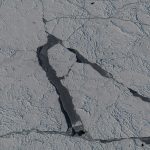Infrastructure Monitoring
All runways, roads, bridges, and buildings are in some state of decay. Fodar™ can detect and measure changes in surface elevation as part of a systematic, operational program to detect such changes before they become expensive to fix or cause major surprises.
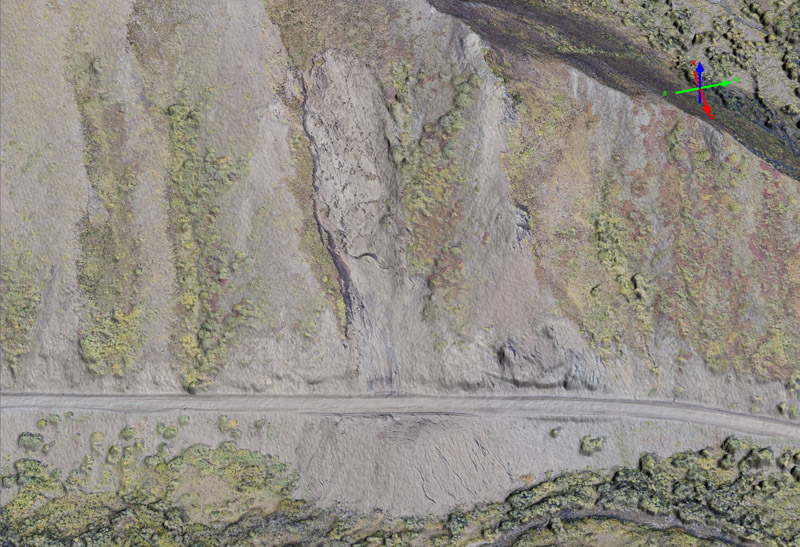
Here a small landslide covered the road into Denali Park in 2013. A year later, there is still motion and small detachments occurring. Mouse-over the image to see where change is occurring between June and August of 2014. Red colors mean that surface dropped over that time, blue means the surface raised.
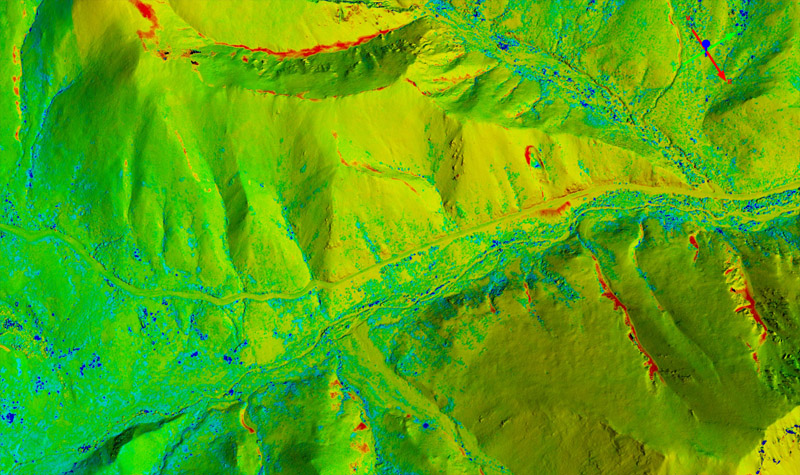
Here is the same valley as above, with the slide left of center. By differencing two Fodar™ DEMs, you can see at a glance where any changes have occurred. Except for the slide, all of the areas of major change here are due to snowmelt. Without an associated orthoimage (like Fodar™ provides), it would be difficult to interpret these changes as snowmelt. Mouse-over to see the image and its snow.
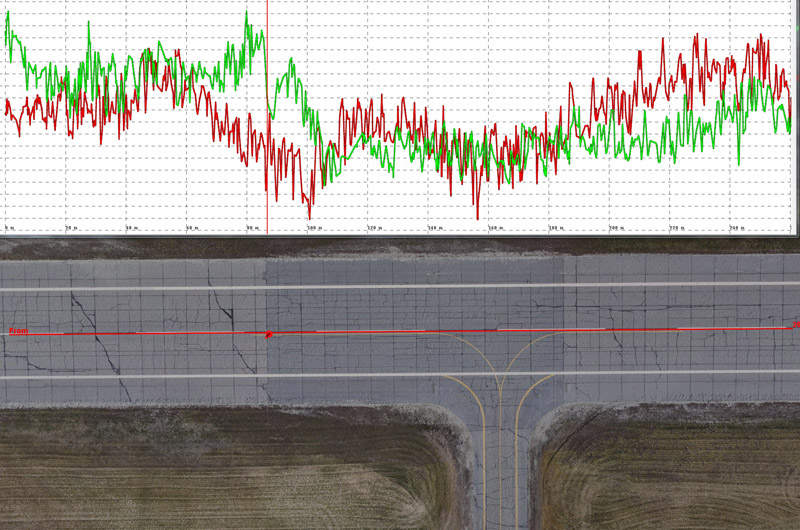
Here the tarmac of a runway has been repaired, as seen by the slightly darker color. The inset plot shows runway elevations in October (red) and January (green), with vertical ticks at one (1) centimeter. The vertical line in the inset is at the connection between new and old tarmac and shows no movement there. On either side of this weld, however, there is up to 10 cm of motion. Fodar™ can detect such subtle changes due to frost heave or other mechanisms on runways, roads, or bridges, identifying issues before they become problems.
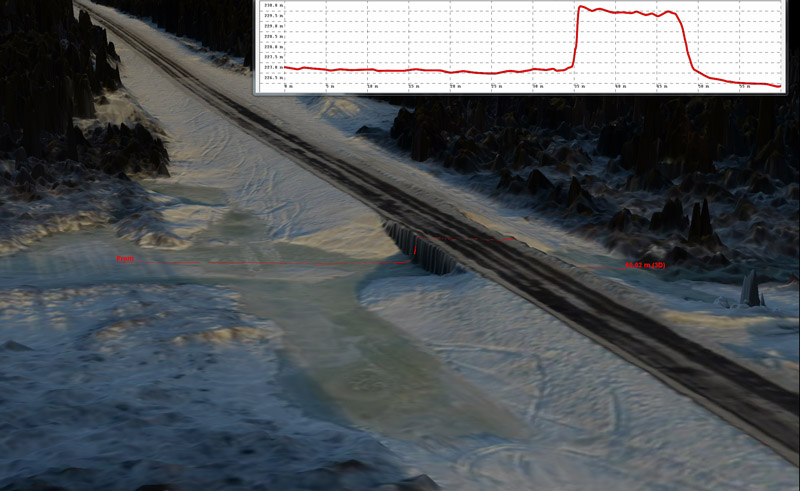
Here is a view looking at the downstream side of a bridge and culvert system in Fairbanks, showing it being overrun by aufeis in winter. When the snow begins to melt, the culverts are clogged with ice and water is impounded on the upstream side of the bridge, seeking its own means of escape downstream. Fodar can measure the thickness of this aufeis by subtracting an ice-free map from it, similar to measuring snow melt. Knowing which culverts are clogged at the beginning of spring can help focus remedial efforts.

